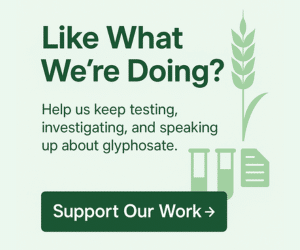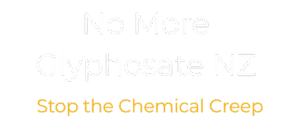There’s a strange déjà vu feeling to all of this.
A product hits the market. It’s wildly popular. Some people raise concerns. Industry reassures. Regulators shrug. And the rest of us? We’re left wondering who to trust.
We’ve been here before—with tobacco, with asbestos, with lead, with DDT. Each time, the story unfolded the same way: slow denial, then slow disaster.
Now, the whispers are circling around glyphosate, the active ingredient in Roundup® and other popular weedkillers. Could it be heading down the same path?
A Familiar Pattern?
Let’s rewind. Tobacco wasn’t just tolerated—it was once recommended by doctors. Asbestos was hailed as a miracle material. Lead was in our petrol, our paint, even our toys.
And every time, the red flags were there long before the bans came.
With glyphosate, we’re not lacking in warning signs. The World Health Organization’s cancer agency (IARC) flagged it as “probably carcinogenic.” Countless lawsuits have been filed by people who developed non-Hodgkin lymphoma. And a Missouri jury recently awarded $611 million after finding Monsanto guilty of selling a defective product and failing to warn people of the risks.
So what happens next?
Do we act—or delay?
The Courtroom Is Already Sending Signals
In the U.S., thousands of lawsuits have been filed against Bayer (which now owns Monsanto) by individuals claiming that Roundup® caused their non-Hodgkin lymphoma.
Some of those cases have resulted in eye-watering verdicts:
- In 2023, a Missouri jury awarded $61.1 million in compensatory damages and $1.5 billion in punitive damages to three plaintiffs.
- In May 2025, an appellate court upheld the $611 million total, rejecting Monsanto’s attempt to overturn the verdict.
- Bayer has already committed more than $10 billion to settle past claims—but over 67,000 lawsuits remain pending.
These are not minor tremors. They’re legal earthquakes.
When courts repeatedly find a company liable for negligence, failure to warn, and selling a defective product, it’s only a matter of time before regulators start to respond—at least in some parts of the world.
Some Countries Are Moving Ahead
- France began phasing out home-use glyphosate years ago.
- Germany announced a plan to ban it entirely by 2024 (though delays remain).
- Mexico is also attempting a ban, facing legal pushback from industry.
- Sri Lanka and Vietnam have enacted restrictions.
These aren’t fringe decisions. They signal a shift in public tolerance. When the burden of proof moves from the consumer to the manufacturer, warning labels—and eventually bans—often follow.
Could New Zealand Be Left Behind?
New Zealand still clings to reassurances that glyphosate is “safe when used as directed.”
But:
- Our non-Hodgkin lymphoma rates are among the highest in the world.
- There’s no up-to-date residue testing data supporting recent regulatory decisions.
- And the government is currently proposing to increase allowable glyphosate residues on over 20 food crops, despite rising global concern.
Will we wait until courts force the issue?
Or until another generation grows up exposed—before the labels finally change?
From Warning Signs to Warning Labels
If glyphosate does one day carry a cancer warning—or is pulled from shelves altogether—it won’t be due to a sudden scientific discovery.
It’ll be because we finally connected the dots.
The lawsuits.
The health trends.
The ignored warnings.
The inconvenient truths.
It won’t be a surprise.
It’ll be the next chapter in a long, familiar story.
And when that day comes, we’ll have to ask:
How many warnings were ignored before we finally acted?
Final Reflection
If glyphosate does end up with a warning label or a ban, it won’t be because of a single study or a single court case. It’ll be because the public slowly woke up—and started connecting the dots that regulators and manufacturers refused to.
We’ll look back and ask:
Why did it take so long?
Why didn’t we act sooner?
And how many people paid the price in the meantime?
Maybe the better question is:
What if this time—we don’t wait?
Further Reading
Before we move on, let’s ask a simple question:
If glyphosate is as safe as we’re told, why are so many scientists, regulators, and courts around the world saying otherwise?
The following studies, articles, and books don’t all agree on everything—but taken together, they tell a story worth paying attention to. A story of mounting evidence, legal reckoning, and global hesitation. If you’re ready to dig deeper, start here.
Because truth doesn’t always come in headlines. Sometimes, you have to look for it between the lines.
Scientific Research & Health Risk Assessments
IARC Monograph on Glyphosate (2015)
The International Agency for Research on Cancer (IARC) classified glyphosate as “probably carcinogenic to humans” (Group 2A), based on limited evidence in humans and sufficient evidence in animals.
Read the monograph
Meta-Analysis: Glyphosate Exposure and Non-Hodgkin Lymphoma
A 2019 meta-analysis found that high exposure to glyphosate may increase the risk of developing non-Hodgkin lymphoma by 41%.
Read about this study – Healthline Media UK
Review: Glyphosate and Non-Hodgkin Lymphoma
This review provides compelling evidence linking glyphosate-based herbicides to non-Hodgkin lymphoma in humans, highlighting genotoxic effects.
Read the study – National Library of Medicine
Legal Cases & Regulatory Developments
Missouri Appeals Court Upholds $611M Verdict Against Monsanto
In May 2025, a Missouri appellate court upheld a $611 million verdict against Monsanto, affirming that Roundup caused cancer in three plaintiffs.
Read the articlemissouriindependent.com+2usaherald.com+2reuters.com+2
Bayer Faces Ongoing Litigation Over Roundup
As of June 2025, Bayer has settled nearly 100,000 Roundup lawsuits for over $11 billion, with approximately 67,000 cases still pending.
Read about it in this Reuters article
Bayer Seeks Supreme Court Intervention in Roundup Lawsuits
Bayer has petitioned the U.S. Supreme Court to block state-level lawsuits alleging failure to warn about Roundup’s cancer risks, citing federal preemption.
Read the articleapnews.com
International Bans & Restrictions
Countries Restricting Glyphosate Use
Several countries, including France, Germany, and the Netherlands, have implemented bans or restrictions on glyphosate use, particularly for household applications.
Read the article – phys.org
Global Overview of Glyphosate Bans
A comprehensive list of countries that have banned or restricted glyphosate, including details on specific regulations and timelines.
Read the overview
In-Depth Analysis
Whitewash: The Story of a Weed Killer, Cancer, and the Corruption of Science
By Carey Gillam
An investigative book detailing how corporate interests have influenced scientific research and regulatory decisions regarding glyphosate.
Read more about Whitewash – [our review]
This list isn’t complete. It’s not meant to be.
It’s a starting point—a collection of signals in a world that prefers silence.
Explore them. Question them.
And most importantly, ask yourself:
If these are just the warning signs—what will it take to finally see the label?
Image Source & Attribution
We’re grateful to the talented photographers and designers whose work enhances our content. The feature image on this page is a combination of photos by gekaskr and windsurfer62.
You can find more of their work here: https://www.123rf.com/profile_gekaskr and https://www.123rf.com/profile_windsurfer62.




